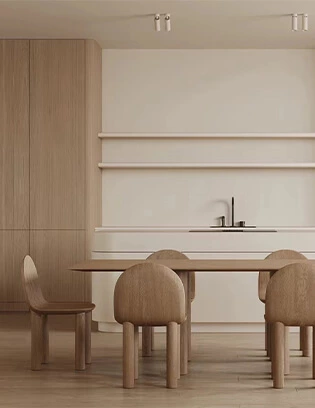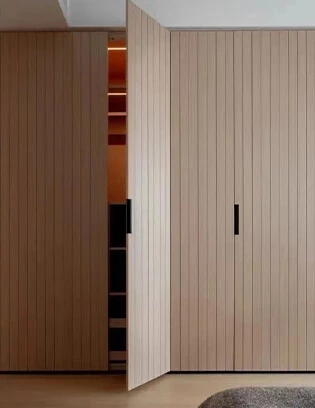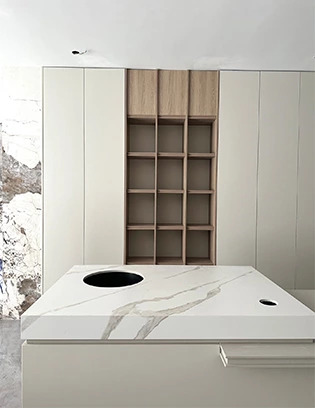Bevel Cutting in High-end Cabinet Craftsmanship
The bevel cutting process, also known as the 45-degree bevel joining technique, is an innovative method used to eliminate gaps during panel joining. By cutting the panels at an angle and finishing them with a beveled edge, the joints between cabinet panels achieve a tight, seamless fit. Traditional panel joining methods often result in imperfect alignments, leading to visual and structural flaws. The 45-degree bevel cut ensures that the panels fit together perfectly, eliminating noticeable gaps. Continue reading to learn more about this technique.
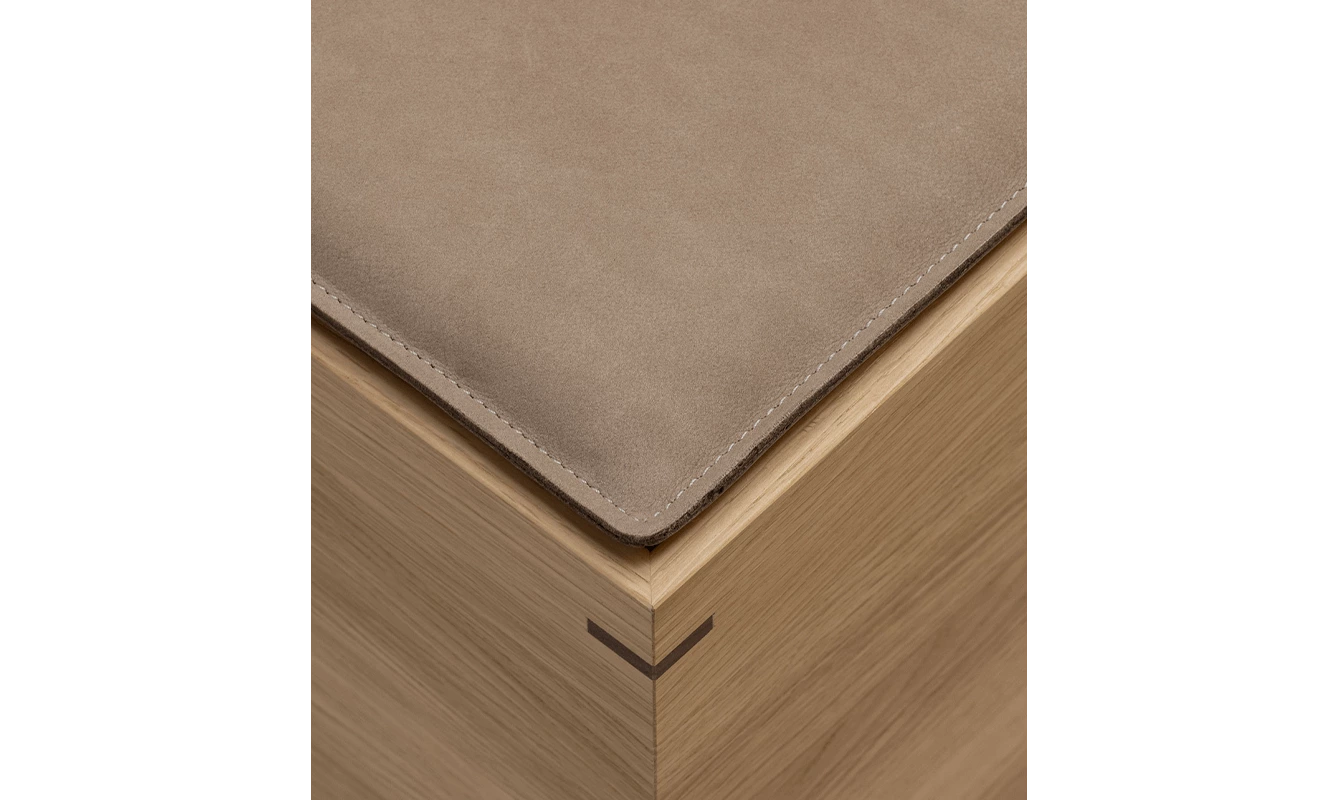
Advantages of Bevel Cutting
In custom home design, the bevel cutting has become increasingly popular among designers and homeowners due to its unique design and practicality.
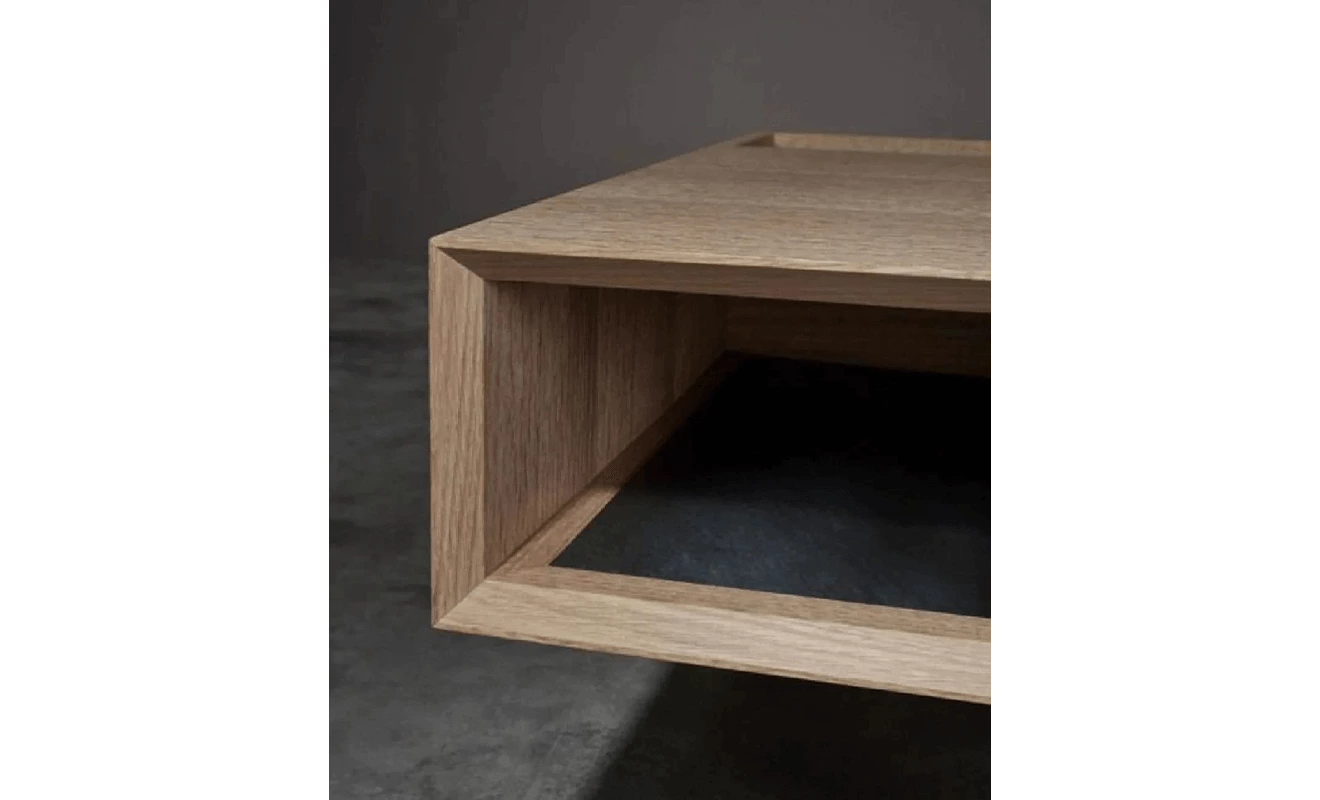
Dimensionality: Bevel-cut panels form sharp, three-dimensional shapes when joined, adding depth and dimension to furniture and interior decor.
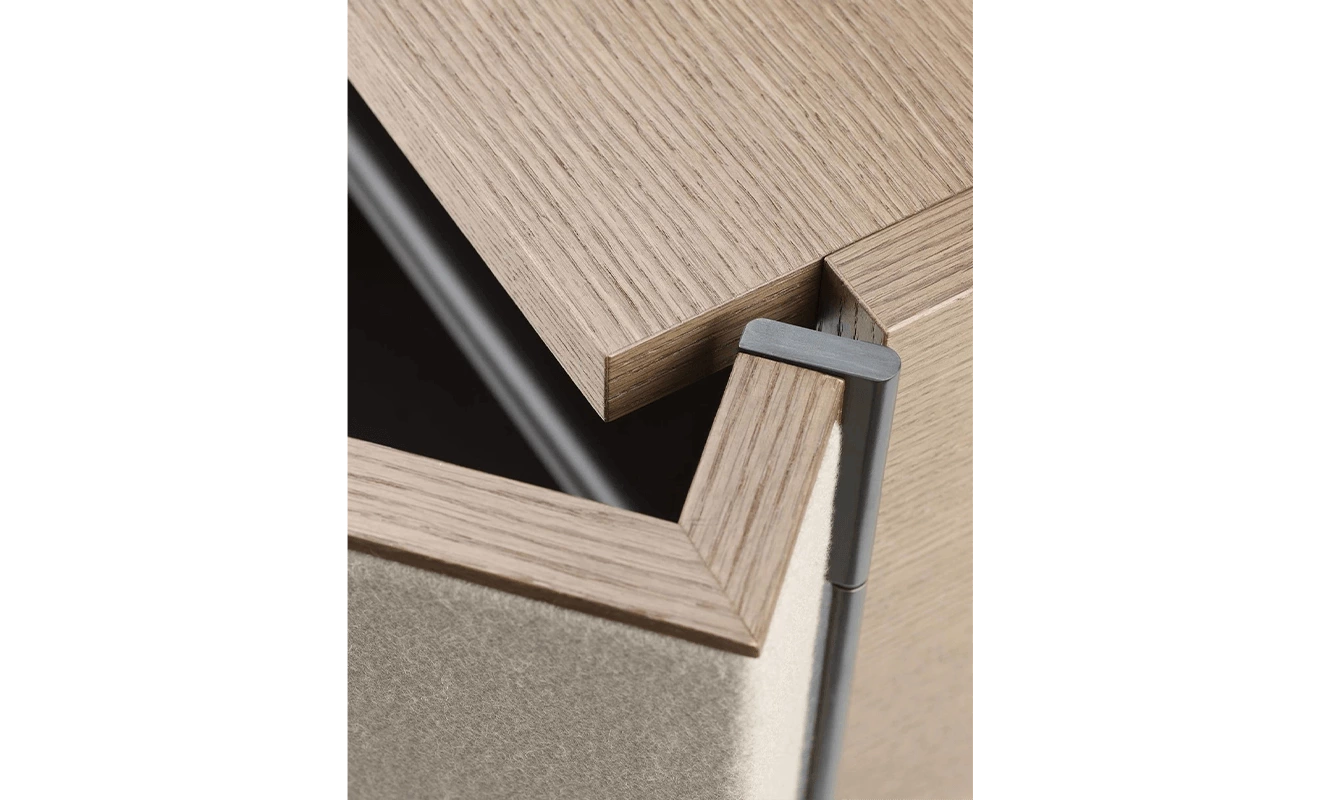
Stability: The increased contact area created by bevel-cut panels enhances the adhesive strength of the joints, resulting in a sturdier furniture structure. Additionally, bevel cutting prevents wood grain breakage, improving the furniture's resistance to deformation.
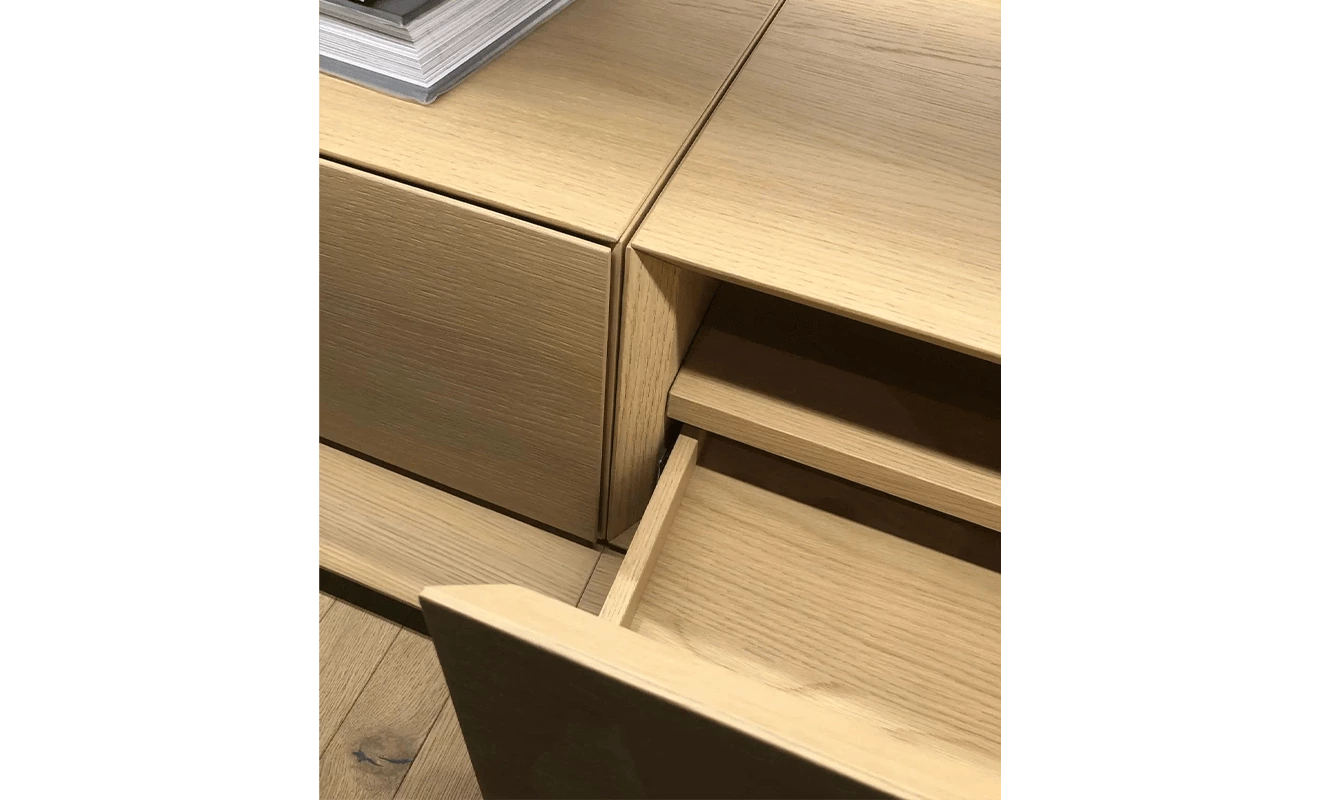
Aesthetic Appeal: Bevel-cut panels can create unique patterns at the joints, such as diagonal lines or herringbone designs, enhancing the visual appeal of furniture and interior decor.
Applications of Bevel Cutting
Door Edge Transition: Treating door edges with bevel cutting eliminates the gaps typically associated with traditional right-angle cuts, resulting in smoother, tighter corners. This technique not only improves the overall aesthetics of the home but also enhances durability.
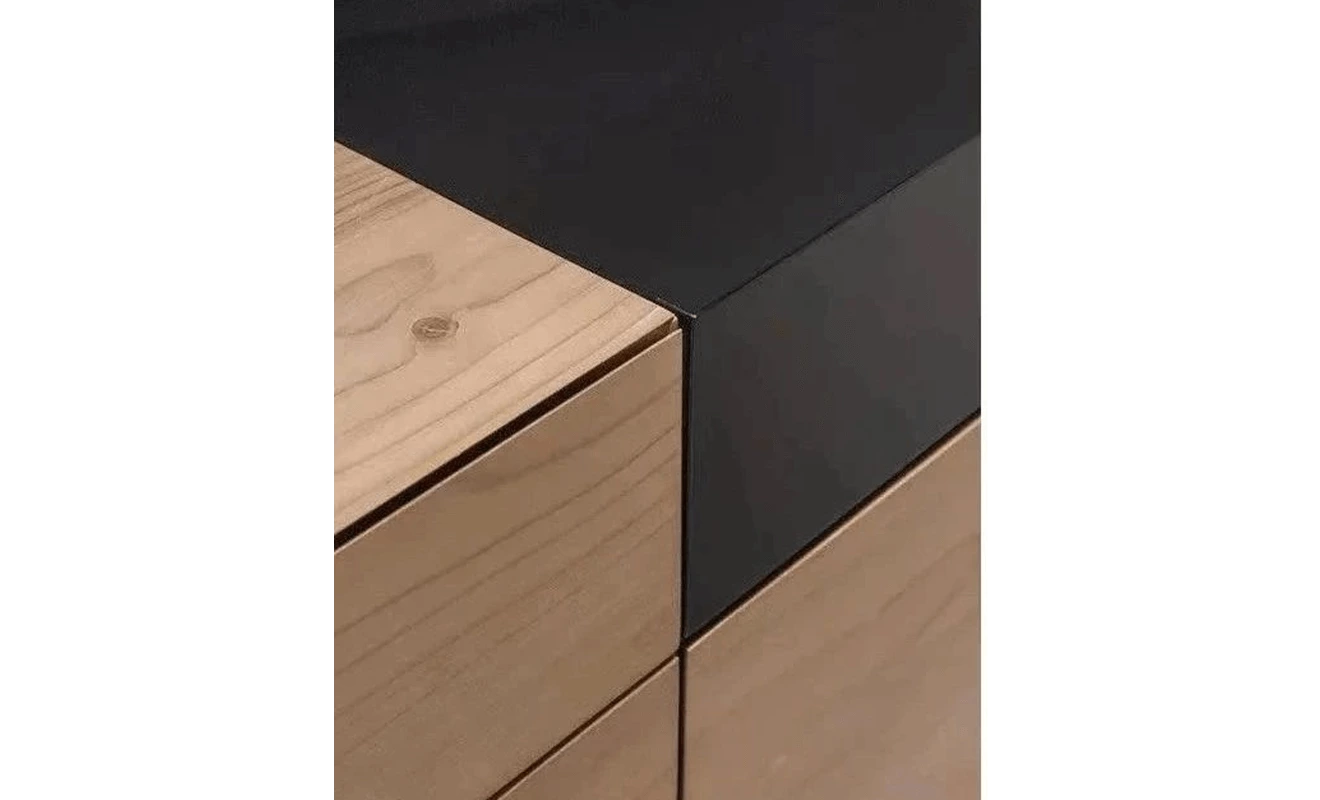
Handleless Cabinet Joint Treatment: The bevel cutting process allows for a handle-free cabinet design, creating a cleaner visual appearance and easier maintenance. This design also results in smoother joint lines, improving the overall harmony of the home decor.
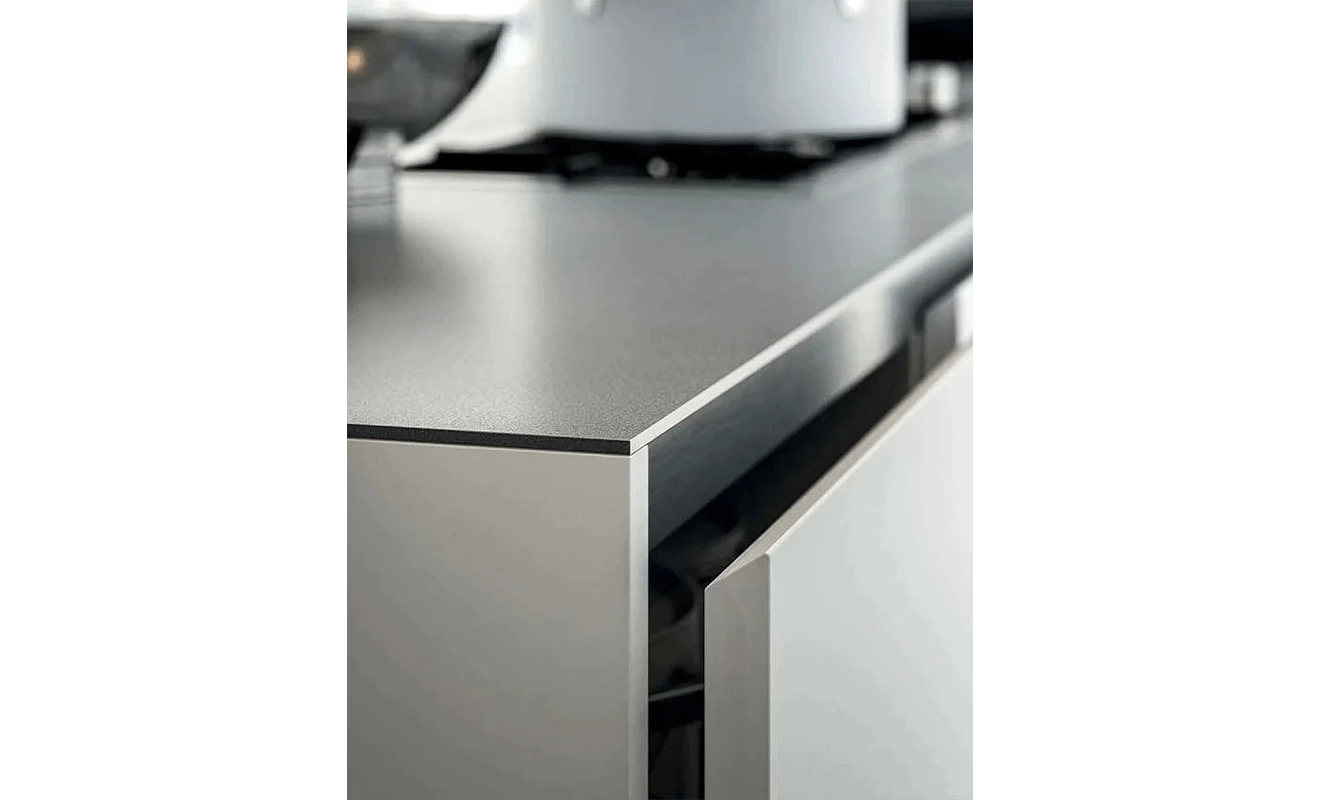
Drawer Soft Closing: Bevel-cut drawer panels can reduce impact when opening and closing, extending the lifespan of the cabinetry. This attention to detail demonstrates the designer's focus on user experience and does improve functionality.
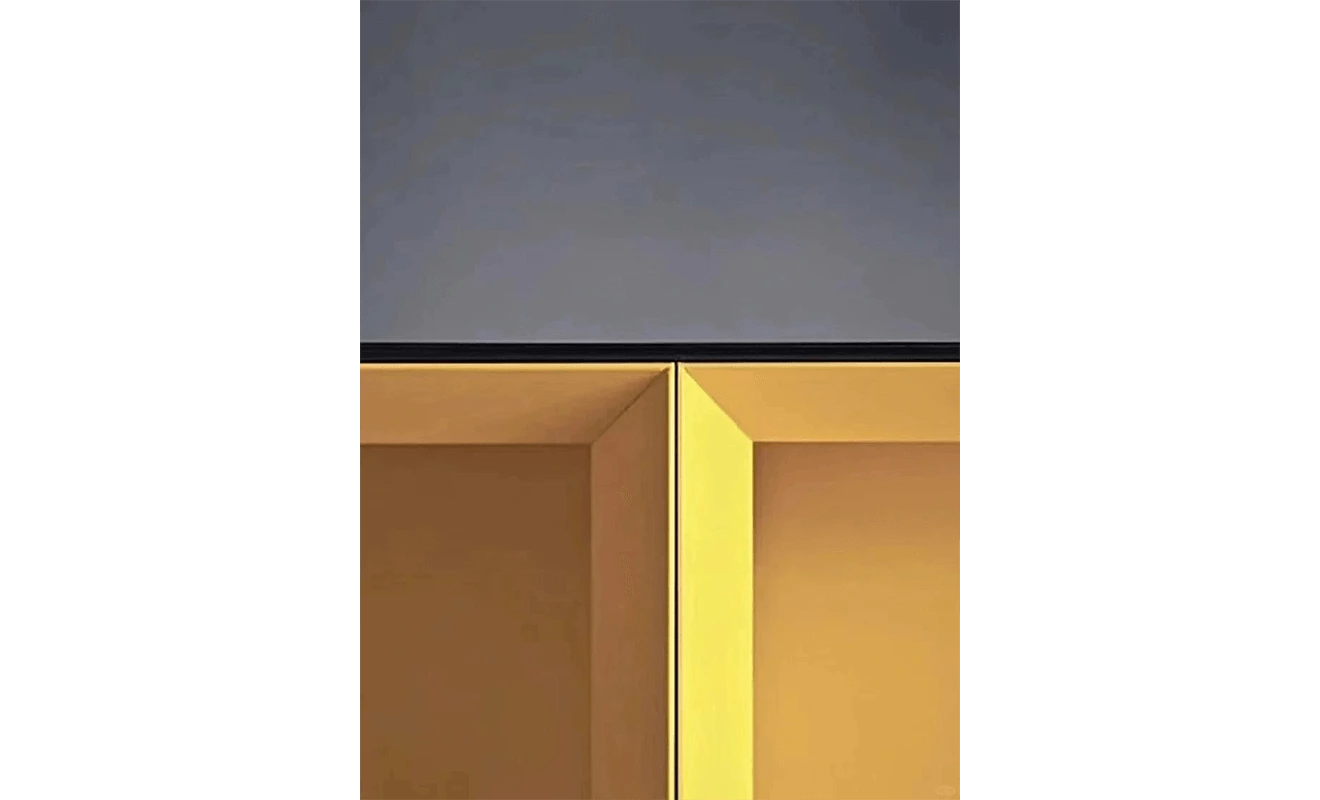
Open Cabinet Edge Optimization: Using bevel cutting for the edges of open shelves and side panels adds a distinct layered look to home design, combining load-bearing capability with modern style. This treatment not only elevates the sophistication of the home but also increases its practicality.
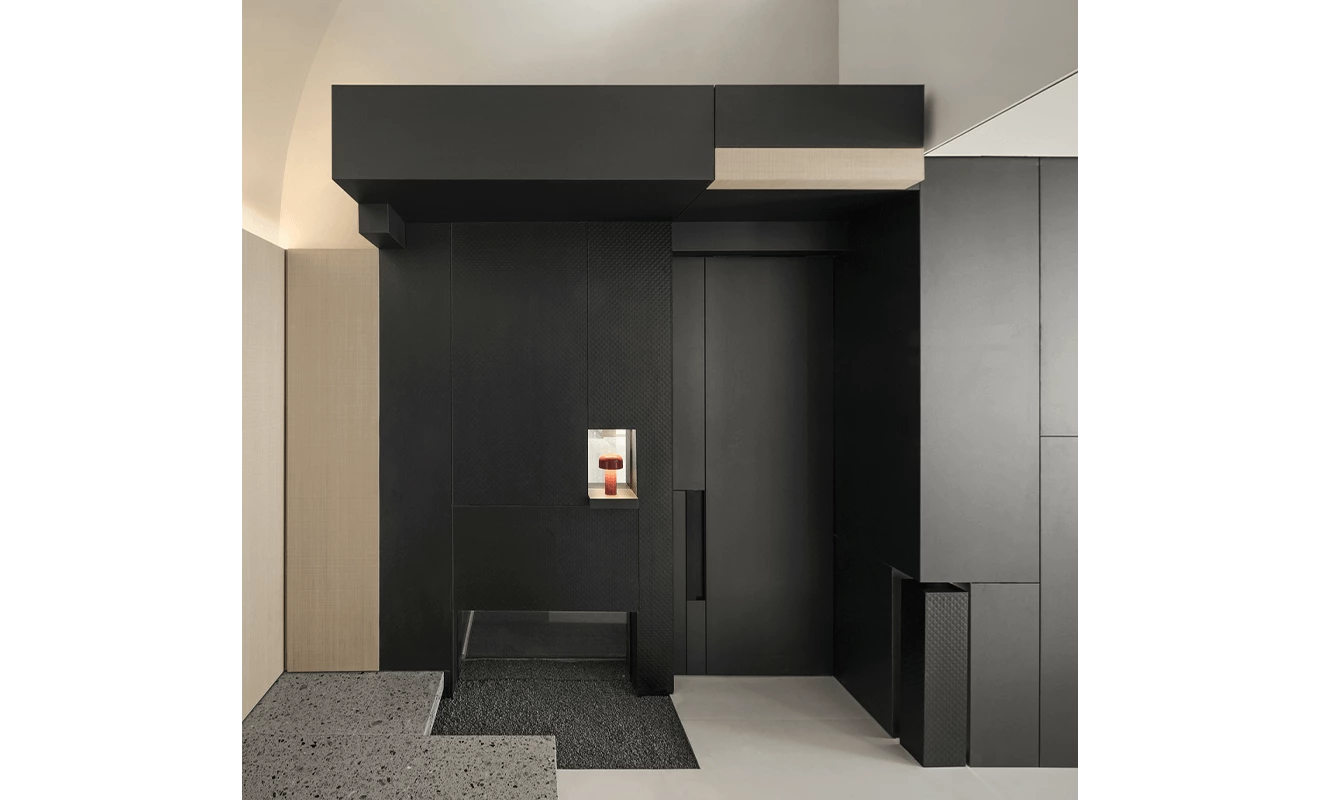
Wall Panel Corner Improvement: Bevel cutting for wall panel corners improves structural integrity, reducing issues such as loosening and cracking that can occur with right-angle joints. This results in longer-lasting wall panels with smoother, seamless corners.
